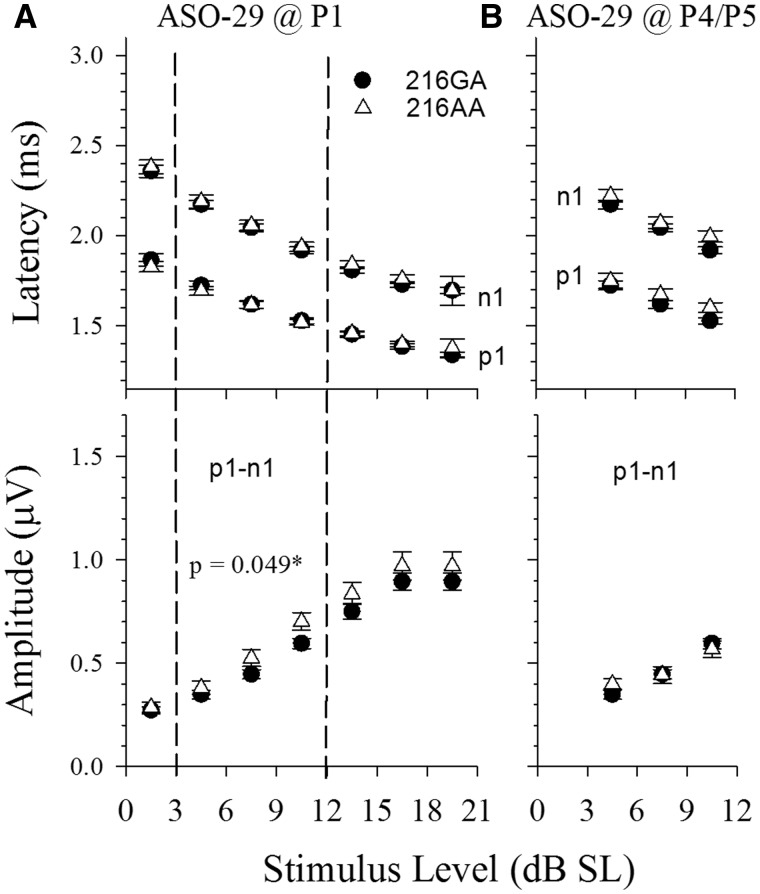Figure 4.
ASO-29 rescues vestibular responses in Usher mice over a wide range of stimulus levels. Shown are input/output (IO) functions, where VsEP latencies (upper panels A and B, p1, n1) and amplitudes (lower panels A and B, p1–n1) are plotted as a function of stimulus level in dB SL. Usher mice rescued with ASO-29 treatment (open triangles, 216AA) at P1 (A, n = 20) and P4/5 (B, n = 19) are shown in contrast to normal heterozygotes (216GA, filled circles, n = 33). Threshold for each animal is taken into consideration by specifying the stimulus level as the level in dB above each individual’s own threshold (dB SL). Latencies (upper panels) and amplitudes (lower panels) for heterozygotes (216GA, filled circles) and rescued Ush1c homozygotes (216AA, open triangles) virtually superpose for both P1 and P4/5-treated animals, although the amplitudes for P1 treated animals were slightly larger than the heterozygotes (rmANOVA F(1,40) = 4.135, P = 0.049). Quantitative evaluation was completed for levels 4.5, 7.5 and 10.5 dB SL (levels bracketed by vertical dashed lines, rmMANOVA). These levels were chosen to preserve the largest sample sizes for the different levels. There were no significant differences in latencies or amplitudes for the P4/5 treatment group.

